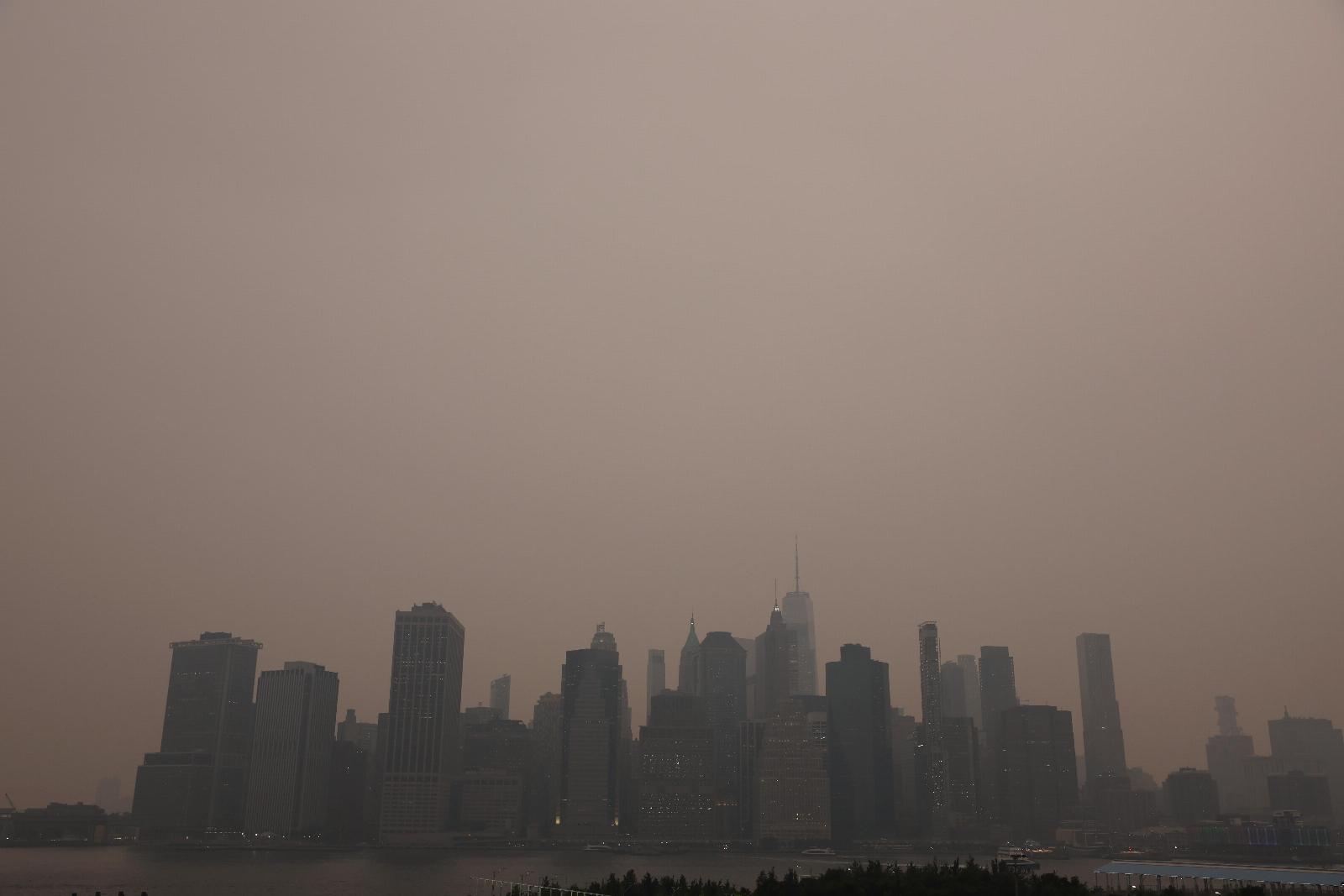
What to Do When the Sun Turns Red
Reading Time: 4 minutesThis Won’t Be the Last Time the East Coast Experiences Wildfire Smoke. Here’s How to Handle It., Air filters, masks, calming tea—and no major life decisions., Wildfire smoke: What to do, and what not to do
A few days into the Smokepocalypse of 2018, I got a call from a friend. ‘Wanna flee?’ she asked me. The hills near my home in Oakland had been invisible for days, so the answer, obviously, was yes. A few hours later, three of us were on the road to Lake Tahoe, the one oasis of green on an Air Quality Index map that swirled with threatening reds and purples.
The East Coast has mostly dodged such calculations. The few smoky days over the last few years have been scattered one-offs of the medium-bad variety: unhealthy for sensitive groups, like folks with asthma. In terms of bad air days per year, the East Coast, where I now live, is doing great.
This week, though, the air quality here is firmly bad. On Tuesday, New York City had the most polluted air of all the world’s major cities, thanks to wildfire smoke drifting down from Québec; this may go down as Canada’s worst wildfire year on record. And pollution numbers don’t account for the mix of pollutants: When wildfires rage, plenty of things that aren’t meant to be incinerated go up in smoke. If the air smells extra toxic, that may be because it is.
Perhaps you live in New York and spent yesterday wandering around outside like normal. I did! At first, I thought the ominous sky was some new fun East Coast weather. Maybe a thunderstorm? I assumed my headache was from not hydrating.
Nope. This month’s Strawberry Moon is now apocalypse red. And it won’t be the last. Climate change is drying out even regions ‘typically thought of as relatively wet,’ wrote journalist Kendra Pierre-Louis in the Atlantic last fall. ‘The East will not emerge unscathed from the infernos that are quickly becoming a hallmark of western summers.’
East Coast friends: Consider this your practice run. If this is your first bad air week, here’s what to do.
First, stay inside if you can—even (and especially) if you have little ones who are climbing up the walls. Limiting exposure is key for people in vulnerable groups; New York’s Governor Kathy Hochul has even issued an advisory saying so. A 2021 research review in Nature connected childhood wildfire-smoke exposure to health challenges like asthma, high blood pressure, childhood pneumonia, and lifetime cancer risk. Pregnant people should also be cautious, as wildfire smoke may be associated with a higher risk of low birth weight.
If you have to go out, mask up, buttercup! Wildfire smoke particles are much smaller than the coronavirus, so an N95 will be more helpful than a bandanna. If you have a physical job, call out if you can; take it easy if not. Don’t exercise outdoors.
On the West Coast, historically mild winters mean drafty houses. You probably don’t need to stick a rolled-up towel under your back door.
If you have not already, buy a portable HEPA air filter. If you can’t spring for a new appliance—or if the panic-buying has set in and portable filters are sold out—MERV 13–rated HVAC filters over a box fan can also work. Put it toward the middle of the room.
Even if you can’t buy an air filter in time for this week’s smoke, buy one anyway: You will be glad next time. Canada has lots of trees; they will continue to burn. If you live near a busy road with a lot of exhaust, you might want to just keep a filter running anyway: Car exhaust, like wildfire smoke, contains PM 2.5—tiny pollutants less than 2.5 microns wide—and can increase your lifetime risk for lung problems like asthma.
Check to make sure your AC isn’t pulling air in from the outside; turn it off or set to recirculate if it is—the EPA has advice on how to adjust the settings. Don’t fry food on the stove; that will just make your indoor air quality worse.
If you feel compelled to do something, nudge your local congressperson to prioritize particle pollution; if you drive, consider using IRA incentives to switch to an electric vehicle. Transitioning away from fossil fuels ASAP is good for our lungs from a car-exhaust standpoint as well as from a preventing-Canada’s-wildfires-from-getting-exponentially-worse standpoint.
Most importantly, for now, slow down. Your lungs are working hard. If you get a smoke headache, a nap may help—it did for me. Drink lots of water. If being sort of witchy is your jam, consider making Lung Tea; herbalists combine ingredients like marshmallow root, nettle leaf, or licorice that may help soothe throat irritation, along with ingredients like mint or chamomile that many people find calming. Smoke can be stressful.
Smoke exposure can be emotionally on par with being hangry, so plan accordingly. If you do decide to get out of Dodge, learn from my mistakes: Pause to make sure you are booking a nonsmoking hotel … not, say, a room at a smoke-filled casino. And do not debate the pros and cons of bringing children into this world over a 2 a.m. tarot reading; this will inevitably end in tears. The goal, as my friend Rosanna put it, is simply ‘getting through the weekend without a headache.’ Everything else can wait, and this too shall pass.
Ref: slate
MediaDownloader.net -> Free Online Video Downloader, Download Any Video From YouTube, VK, Vimeo, Twitter, Twitch, Tumblr, Tiktok, Telegram, TED, Streamable, Soundcloud, Snapchat, Share, Rumble, Reddit, PuhuTV, Pinterest, Periscope, Ok.ru, MxTakatak, Mixcloud, Mashable, LinkedIn, Likee, Kwai, Izlesene, Instagram, Imgur, IMDB, Ifunny, Gaana, Flickr, Febspot, Facebook, ESPN, Douyin, Dailymotion, Buzzfeed, BluTV, Blogger, Bitchute, Bilibili, Bandcamp, Akıllı, 9GAG